The Collaborative Architecture of Alvar and Aino Aalto
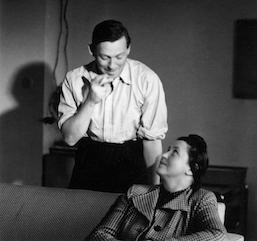
It was fitting to install the exhibition in a museum surrounded by the vast greenery of Kinuta Park, which echoes the deep forests for which Finland is admired. The setting also reflects the elements of nature the Aaltos diligently instilled in their works. Upon entering the exhibition hall, one is immediately welcomed by life-size interior settings of wooden furniture—a clear representation of the Aalto design.
Alvar Aalto (1898-1976) was not only one of Finland’s most prominent architects, but also a crucial history-maker in Nordic Classicism and International Style Modernism. His exceptional career extended across architecture, furniture, textiles, glassware, sculpture, and painting. His distinct style was regarded as Scandinavian Modern, focusing on the manufacturing processes of materials, especially bentwood. In the 1920s, he joined national and international competitions, and gradually began to seek his esteemed place among cream of the crop world architects such as Le Corbusier, Mies Van der Rohe, Oscar Niemeyer, and Frank Lloyd Wright, all whom he was inspired by and acquainted with. Like them, Alvar launched his first solo exhibition (“Alvar Aalto: Architecture and Furniture”) at the Museum of Modern Art (MoMA). This 1938 exhibition earned him international recognition, and his remarkable success landed him professorial tenure at Massachusetts Institute of Technology (MIT) in 1941.
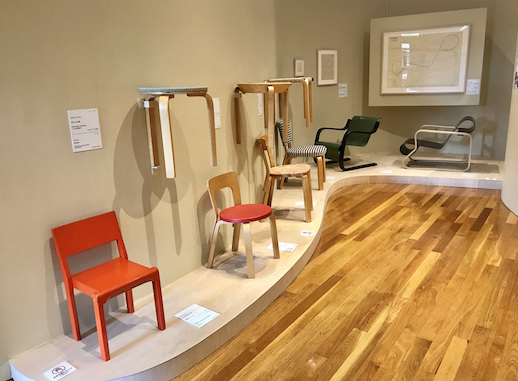
It was at the Helsinki University of Technology where Alvar met Aino (1894–1949). At that time, it was rare for women to study architecture, so, Aino’s impeccable skill and talent were not easily ignored. Aino entered Alvar’s office in Jyväskylä in 1924 as his assistant, and married him the same year after six months. She became actively involved in all their office projects: interior, product design, landscaping; and also social welfare projects, such as housing for workers, child welfare facilities, and hospitals. The couple was known to have always worked fairly, equally, and so closely that sometimes it was difficult to distinguish which works were by Alvar or Aino. Their compatible union resulted in the establishment of their company Artek in 1935, attesting to a fruitful and endearing personal and professional relationship mirrored beautifully in the harmony of their achievements.
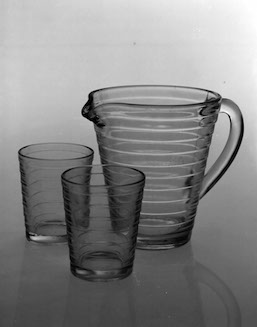
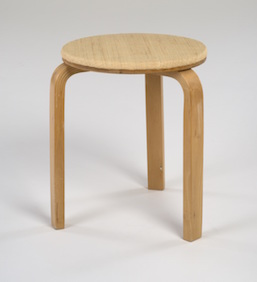
Some of the Aaltos’ popular designs displayed in the exhibition include the famous Bölgeblick glassware series (Aino Aalto, 1932, Alvar Aalto Foundation). Bölgeblick, which is Swedish for “water ripples” (Aalto is Finnish for “waves”), features a slightly wide-tiered design on a ripple-ringed surface that reflects light elegantly. The colorful glasswares are also slip-resistant and stackable, providing not only aesthetics but also functionality. The design was awarded the gold medal at the Milan Triennale in 1936, and established Aino’s name as a designer. Together with this series, the couple released the Aallon kukka (Aalto Flower) tableware, consisting of a plate, two bowls, and a vase, which produced a lovely flower image when stacked.
Alvar, as noted, was known for his bentwood furniture. In the exhibition, one can also view many of his birch furniture pieces, along with video of the L-leg manufacturing and wood bending process for the chair and table legs invented by Alvar and his partner Otto Korhonen in 1933. The Stool 60 (Alvar Aalto, 1933, Alvar Aalto Foundation), characterized by its practical stackability, was first released in 1933 at a Finnish furniture exhibition in London. Its instant success consequently commissioned exports to Britain, and eventually turned into a triumphant mass-production achievement.
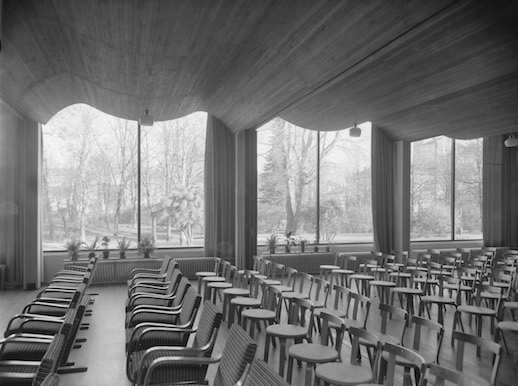
The Stool 60 was presented at Alvar’s Viipuri Library (completed in 1935, after having won the design competition in 1927). In the exhibition, extensive rows of these stools can be viewed in an enormous wall photograph (Lecture Hall, Viipuri Library, Alvar Aalto Foundation) behind the actual armchair, stool, and chair used in the library. The library was greatly praised for its interior skylights dotted across the undulating wood ceiling, the internal circulation between spaces, and its functional characteristics.
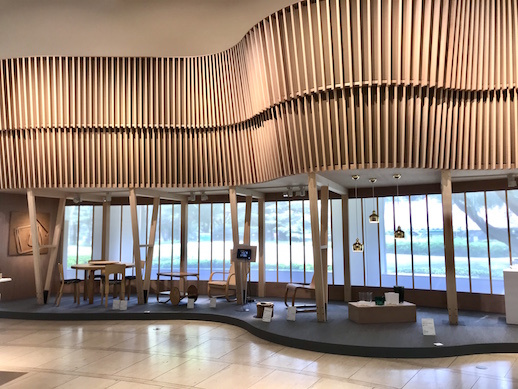
The climax of the exhibition is an astounding installation of the Finnish Pavilion at the New York World’s Fair in 1938-1939 (Aino Aalto and Alvar Aalto, Alvar Aalto Foundation). Alvar and Aino wanted to disrupt the typical rectangular-boxed space, and instead create a dynamic wooden wobbling wall on one side and a free-form balcony with a restaurant on the other. The dramatic facade appears to tilt toward the visitors, and wrap them at the same time, as though they are enveloped by the same beauty, depth, and stirring inspiration embraced by the Aaltos’ extraordinary relationship.
Alma Reyes
Alma Reyes



